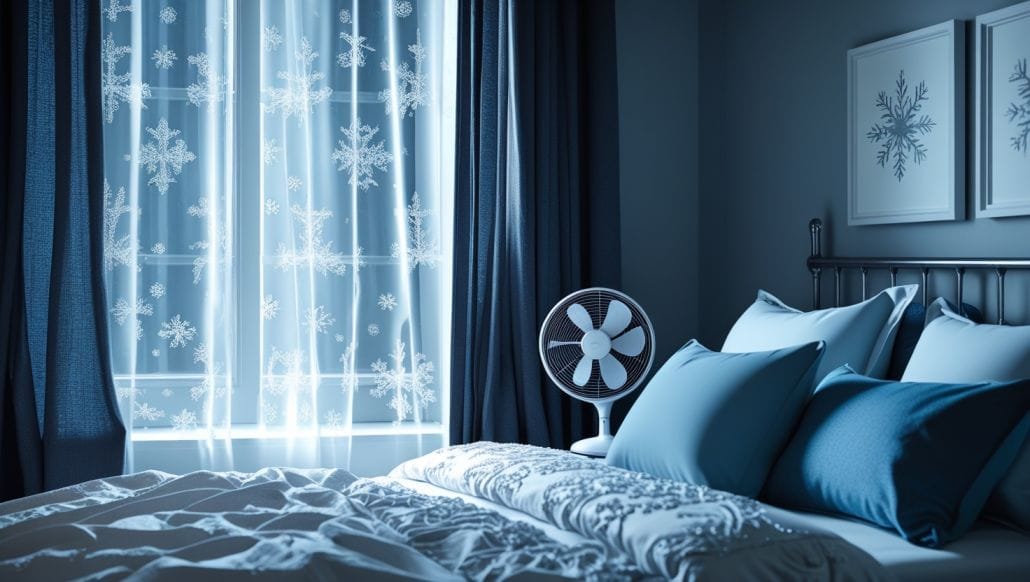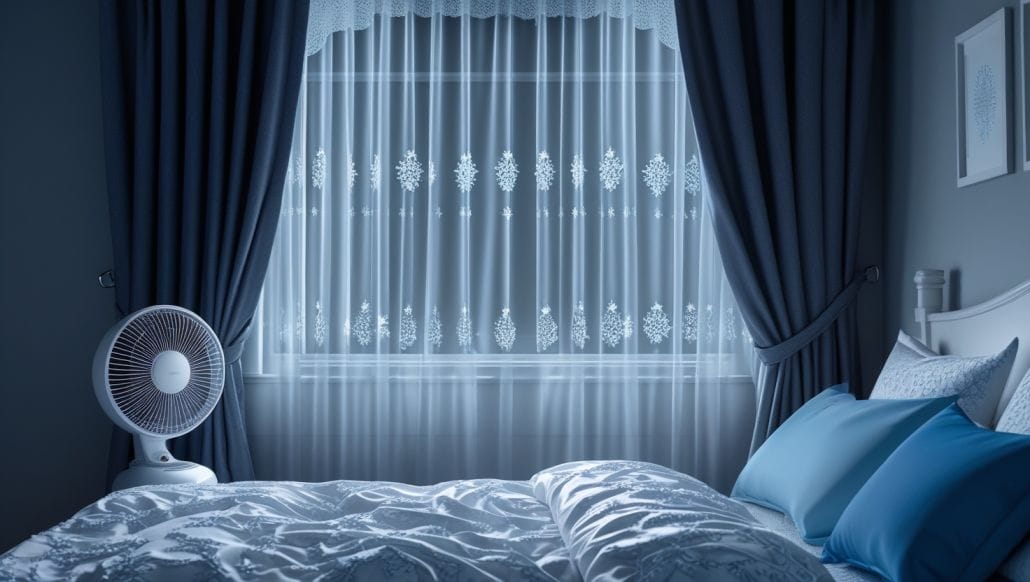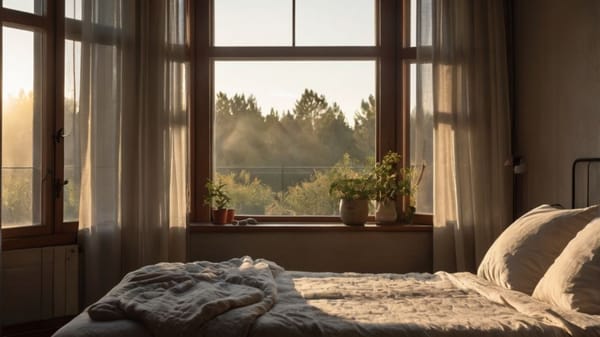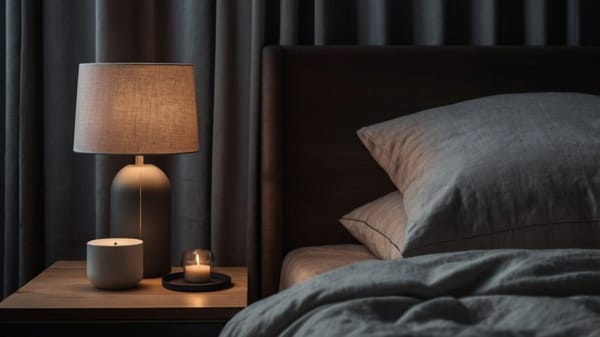The Ideal Bedroom Temperature for Better Rest
Want better sleep without the struggle? Discover how dialing in your bedroom temperature unlocks faster recovery, energy, and mental clarity.

What if one simple tweak could unlock deeper, more restorative sleep starting tonight? You don’t need fancy gadgets or endless hacks—just a smarter bedroom setup.
The temperature of your sleep space is one of the easiest, most powerful changes you can make for better energy, sharper recovery, and a healthier mind.
Most people miss it. But dial it in, and your body does exactly what it’s built for: recharge, reset, and rise strong.
Why Your Body Cares About Temperature So Much
Sleep isn’t just about closing your eyes and hoping for the best. It's a carefully orchestrated biological process, and temperature plays a leading role.
Here’s the deal: your core body temperature needs to drop by about 1 to 2 degrees Fahrenheit to initiate sleep.
This cooling triggers the release of melatonin, the hormone that signals your brain it’s time to wind down. It's not optional; it's hardwired into your biology.
When your environment fights against that cooling process—because your room is stuffy, hot, or overly cold—you short-circuit one of sleep’s most critical pathways.
That’s why even people who "sleep eight hours" can still feel like zombies the next day. It’s not just quantity. It’s quality.
Studies from institutions like the NIH and Harvard Medical School have hammered this point home: temperature regulation is one of the single biggest levers for deeper, more effective sleep.
In plain terms? If your room temp is wrong, you’re swimming upstream every night.

Finding the Sweet Spot: The Science-Approved Range
Research consistently points to a bedroom temperature between 60 and 67 degrees Fahrenheit (roughly 15 to 19 degrees Celsius) for optimal sleep.
This range isn’t random. It syncs up perfectly with your body’s natural sleep rhythms:
- Melatonin production kicks into gear more efficiently.
- Heart rate and metabolism slow down, preparing you for true deep sleep.
- Brain waves shift into slower frequencies that allow for physical healing and memory consolidation.
Going above 67°F, especially into the mid-70s, causes more time spent in lighter sleep stages like REM and Stage 1, making it harder for you to hit those deep, restorative sleep cycles.
Drop below 60°F and you risk subtle thermal stress—your body shivers, blood vessels constrict, and you keep waking without even realizing it.
The goal isn’t just “cold.” It's controlled coolness—enough to support natural physiological processes without making you uncomfortable.
Setting Up the Perfect Sleep Environment
Getting your bedroom to the right temperature isn’t about turning your space into a meat locker. It’s about strategic cooling that feels effortless.
Start with your thermostat. If you have a programmable one, set it to start cooling your bedroom about 60–90 minutes before you plan to sleep. This gives the room enough time to settle into the ideal zone before you even climb into bed.
No thermostat? No problem. Fans, portable AC units, or even cracking a window can work wonders. Air circulation matters too. A stagnant room traps heat. A slight airflow helps regulate body heat without overcooling you.
Think about your bed itself. The wrong mattress or bedding can undo everything. Memory foam, for instance, is notorious for trapping heat unless it’s specifically designed with cooling tech.
Consider breathable mattresses, moisture-wicking sheets, and lightweight comforters.
Pro tip: Layer your bedding. A lightweight sheet under a light blanket lets you easily adjust without waking fully if your body temperature shifts during the night.
Dress (or undress) for success. Heavy pajamas are a trap. Stick to light, breathable fabrics like cotton, bamboo, or moisture-wicking blends designed for performance.
Sometimes, less is more—sleeping in underwear or even nude allows your body to regulate naturally, making it easier to stay within that crucial temperature range.
Limit electronics and heat sources. TVs, gaming consoles, even chargers give off heat. If you’re serious about dialing in your sleep, unplug or power down anything that doesn’t need to be running overnight.
Create a sensory signal. A cool, dark, quiet room doesn’t just physically support better sleep; it psychologically primes you too.
Walking into a slightly chilled room at night creates a mental cue for your brain: it's time to rest. Over time, this conditioning makes falling asleep faster and easier.
Real-World Bonus Tips for Staying Cool Without Overcomplicating Things
- Take a warm (not hot) shower 60 minutes before bed. It may seem backwards, but warming your body slightly can trigger a natural cooldown afterward, helping you fall asleep faster.
- Drink water—but not too much. Staying hydrated supports temperature regulation, but avoid slamming a pint of water right before bed unless you enjoy 2 A.M. bathroom trips.
- Keep your feet cool. Fun fact: your feet are major temperature regulators. If you sleep hot, try sticking a foot outside the covers. It sounds silly. It works.
- Invest in blackout curtains. Sunlight heats up a room fast. Blocking it out during late afternoon or early evening can help maintain a stable, sleep-friendly temperature as night approaches.
Final Thoughts
If you’re serious about upgrading your sleep, controlling your bedroom temperature isn’t optional—it’s foundational.
Keep it between 60 and 67 degrees Fahrenheit. Focus on a breathable sleep setup. Minimize heat traps. Train your body and mind to recognize your sleep environment as a sanctuary for recovery.
Start tonight. Set your room temp, swap your heavy bedding, and feel the difference tomorrow. Better energy, sharper focus, faster recovery—it’s all waiting on the other side of smarter sleep.




